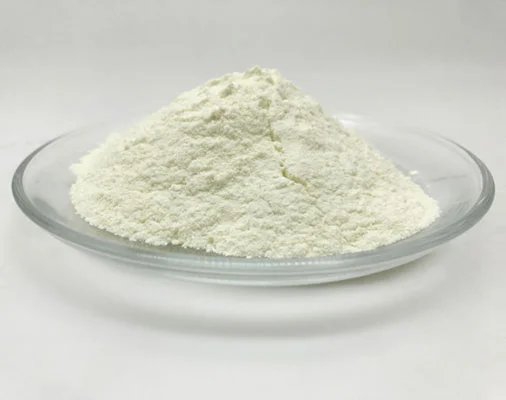- This topic is empty.
-
AuthorPosts
-
2024-11-08 at 11:40 am #81831
The quest for natural antioxidants has been a focal point in the field of health and nutrition. Caffeic acid, a naturally occurring phenolic compound, has been the subject of numerous studies due to its potential antioxidant properties. In this blog post, Viablife will share with you the antioxidant effects of natural phenolic compound caffeic acid in vivo and in vitro, exploring its mechanism of action and potential health benefits.
Introduction:
Oxidative stress, resulting from an imbalance between the production of reactive oxygen species (ROS) and the body's antioxidant defenses, is implicated in the pathogenesis of various diseases, including cardiovascular diseases, cancer, and neurodegenerative disorders. Antioxidants, capable of neutralizing ROS, are therefore of significant interest in both preventative and therapeutic strategies. Caffeic acid, a bioactive compound found in a variety of plant sources, has garnered attention for its purported antioxidant capabilities.
Chemical Structure and Occurrence:
Caffeic acid is a hydroxycinnamic acid derivative characterized by a 3,4-dihydroxycinnamic acid structure. It is widely distributed in the plant kingdom, particularly in coffee beans, artichokes, and various herbs and spices. Its presence in these dietary sources suggests a potential for dietary intake and subsequent health benefits.

In Vitro Studies:
1. Scavenging of Free Radicals: Caffeic acid has been shown to effectively scavenge free radicals, including the hydroxyl radical, superoxide anion, and DPPH radicals, demonstrating its direct antioxidant activity.
2. Metal Chelation: The ability of caffeic acid to chelate metal ions, thereby preventing the formation of ROS through Fenton reactions, has been established.
3. Enzymatic Activity: Caffeic acid has also been found to stimulate the activity of antioxidant enzymes such as superoxide dismutase (SOD), catalase (CAT), and glutathione peroxidase (GPx), enhancing the endogenous antioxidant defense system.
4. Lipid Peroxidation Inhibition: Studies have shown that caffeic acid can inhibit lipid peroxidation, a process that leads to cell membrane damage and contributes to oxidative stress.
In Vivo Studies:
1. Oxidative Stress Models: Administration of caffeic acid has been shown to reduce oxidative stress in animal models induced by various agents, such as hydrogen peroxide or chemical carcinogens.
2. Neuroprotection: In studies focusing on neurodegenerative diseases, caffeic acid has demonstrated neuroprotective effects, potentially through its antioxidant and anti-inflammatory properties.
3. Cardiovascular Protection: Research indicates that caffeic acid may protect against cardiovascular diseases by reducing oxidative stress and inflammation in the heart and blood vessels.
4. Cancer Prevention: The chemopreventive potential of caffeic acid has been explored in animal models, with evidence suggesting it can inhibit tumor growth and reduce the incidence of certain cancers.
Mechanisms of Action:
1. Direct Free Radical Scavenging: As observed in vitro, the direct interaction with ROS is a primary mechanism.
2. Modulation of Antioxidant Enzymes: Caffeic acid's ability to modulate the activity of antioxidant enzymes contributes to its in vivo effects.
3. Anti-Inflammatory Effects: By reducing the production of pro-inflammatory cytokines and other mediators, caffeic acid may indirectly reduce oxidative stress.
4. Signal Transduction Pathways: Caffeic acid may modulate various cellular signaling pathways involved in the regulation of oxidative stress and cell survival.
Health Benefits:
The antioxidant properties of caffeic acid have been linked to a range of health benefits, including:
1. Reduced Risk of Chronic Diseases: By neutralizing ROS and reducing inflammation, caffeic acid may lower the risk of chronic diseases associated with oxidative stress.
2. Enhanced Immune Function: Its effects on immune cell function and inflammatory mediators suggest a role in modulating immune responses.
3. Improved Cognitive Function: The neuroprotective effects of caffeic acid may contribute to maintaining cognitive health and preventing neurodegenerative disorders.
4. Aesthetic Benefits: As an antioxidant, caffeic acid may also have applications in skincare, protecting against environmental damage and promoting skin health.

Why Choose Viablife's Caffeic Acid?
Viablife distinguishes itself with its high-purity (>99%) caffeic acid, crafted through cutting-edge biosynthesis and fermentation technology. While typical offerings range between 70%-90% purity, Viablife ensures superior quality. Connect with us to explore our biomedical offerings and elevate your wellness journey with Viablife's premium caffeic acid.
Related Products:
1. Nicotinamide
3. Ceramide NP
4. Arbutin
https://www.viablife.net/news/antioxidant_effects_of_caffeic_acid_in_vivo_and_in_vitro.html
http://www.viablife.net
Viablife -
AuthorPosts
- You must be logged in to reply to this topic.


